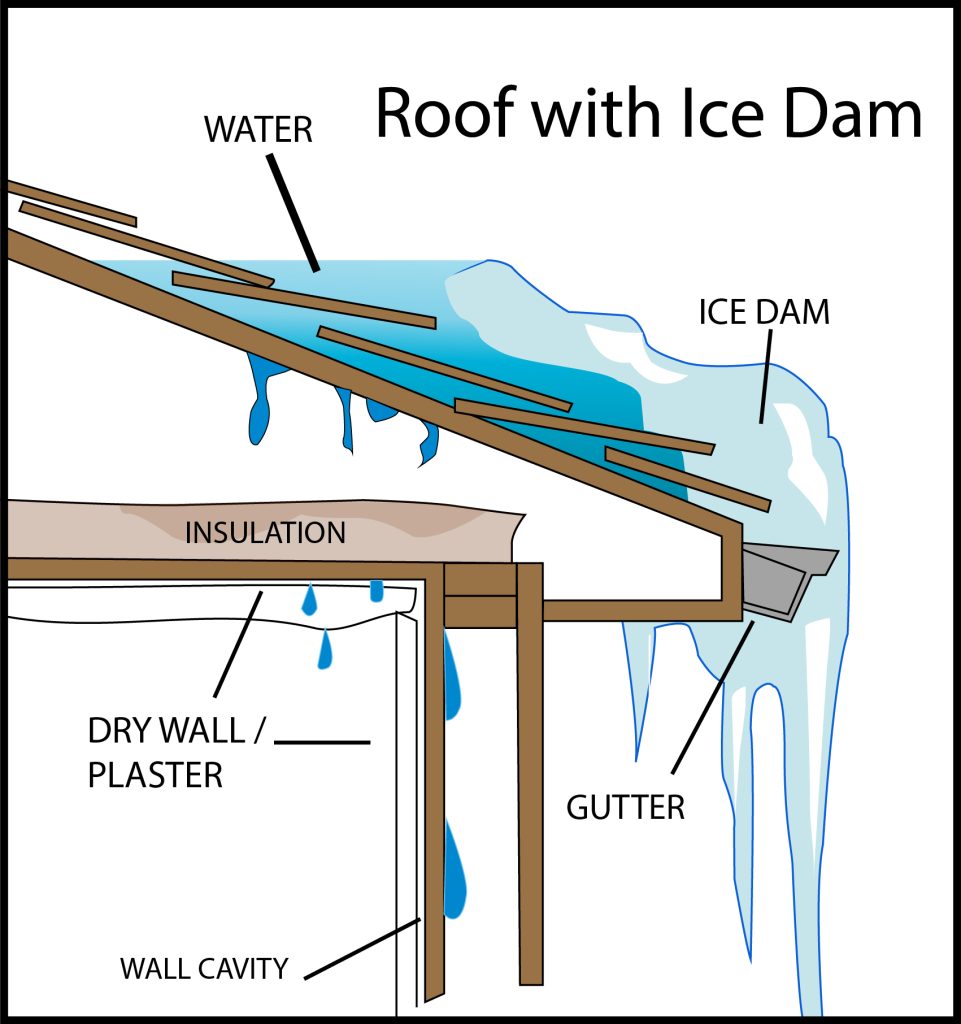Living in Canada means dealing with snow, ice, freezing rain, strong winds, and a multitude of other weather conditions that could damage your client’s home.
As a contractor, it’s your job to ensure that you are picking the best material for your client as well as educating them on how to protect their eavestroughs during the harsh Canadian winters.
Table of Contents
Recognizing Ice Dams

Ice dams are a common issue in Canadian homes and one of the most expensive to fix when left untreated.
Ice dams are a ridge of ice that forms along the edge of a roof and prevents melted snow from draining through the eavestrough and downspout.
Because of this, the water has nowhere else to go except in; resulting in the water going under the shingles or roof tiles causing leaks not only to the client’s roof, but also their attic, insulation, ceiling, and walls. Additionally, this could lead to bigger issues such as mould and mildew.
If you are installing a client’s eavestrough or downspout then you need to look for these telltale signs that their home has ice dams.
Ice on the Walls
If you notice ice forming on the exterior of the home’s walls then this is a bad sign.
Ice appears on the walls because the ice dams are forcing water behind the siding and soffit of the home.
Thoroughly inspect the siding and soffit and be on the lookout for any staining that may have been left behind.
Clogged Eavestrough
If the eavestrough isn’t draining this could be due to ice dams forcing water back into the roof. This can cause significant water damage to the home’s structure.
Ensure that you check for any signs of water damage before proceeding.
Uneven Snow Patterns on the Roof
When speaking with your client make sure that you ask them if they have noticed if the snow on their roof has melted in strange ways.
If you or your client see that snow is melting at higher areas of the roof, but remains at the edges and lower areas, this is a sign of ice dams.
Icicles
Although icicles are pretty, they are actually one of the biggest signs that the home has ice dams.
Because the water has nowhere to go, this causes the snow to build on the roof resulting in the icicles forming.
On top of that, the weight of the icicles along the eavestrough’s edge can cause significant damage to their eavestrough and roof due to the water back-up.
Snow Guards Are Key

So what can you do to help prevent ice dams from forming in your client’s eavestrough?
Installing a snow guard will help protect your client’s eavestrough from ice dams as well as helping guide snow off the roof.
Ice guards also help increase the longevity of the eavestrough and add rigidity, so even if it gets hit by ice it is unlikely that it will fall off.
Investing in Steel & Aluminum
Steel roofs have been proven to be the best when it comes to colder climates.
This is because the ice and snow can slide down easier and quicker than a regular roof.
Aluminum is another great option.
In fact, when it comes to eavestroughs and downspouts, aluminum is the most popular choice in Canada because it won’t rust and has the ability to expand in colder climates.
Find out if your client is willing to switch out their old soffit, fascia, and let them know what they need to do in order to keep their home safe during the winter.
—
If you’re looking for Canadian-made eavestrough and eavestrough products in aluminum, copper or steel — as well as soffit and fascia. — then check out our product list.
Interested in learning about the proper precautions you should take before you install eavestrough? Check out our Buyer’s Guide for Contractors.

